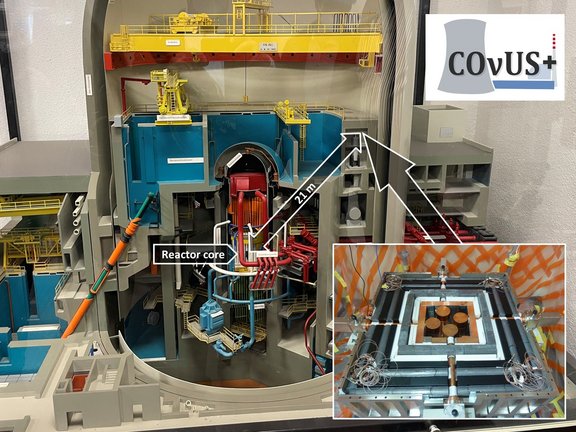The CONUS project is about the exciting properties of neutrinos, weakly interacting particles that are extremely difficult to detect. Neutrinos, or more precisely antineutrinos, are produced in very large quantities in nuclear reactors. Detectors weighing many tonnes are typically required to detect neutrinos. In the CONUS experiment, however, neutrinos from nuclear reactors are to be detected for the first time using so-called coherent scattering on atomic nuclei using semiconductor detectors made of germanium weighing just 4x1 kg, a challenge that no-one has ever mastered before.
To do so, the CONUS experiment was initially installed at the nuclear power plant in Brokdorf, where it took data for almost 5 years between 2018 and 2022. The sensitivity of the experiment was continuously enhanced. Due to the material properties of germanium, which were insufficiently investigated so far, detection turned out to be more difficult than originally expected. From the analysis of the extensive latest data, an upper limit is expected that is only less than a factor of 2 away from the signal. However, various important information about new physical processes beyond the standard model of particle physics can already be obtained from this.
After the shutdown of the nuclear reactor in Brokdorf, a new home for the significantly improved detector, CONUS+, was found 21 metres away from the reactor core at the Leibstadt nuclear power plant (KKL) in Switzerland (see Fig. 1). At this position, more than 10 trillion neutrinos per second pass through each square centimetre of area. Before the relocation, the germanium detectors were refurbished and the shielding against interference radiation from the environment was also significantly improved. At the new location, the expected signal rate of the reactor neutrinos increases more than ten times compared to the measurement in Brokdorf.
Thanks to the excellent interplay between scientists, workshops and administration at the MPIK and various departments at the KKL, the installation work was successfully completed in record time in summer 2023. Data collection finally started on 9 November 2023 and the first promising neutrino data, which should already contain hundreds of neutrinos, has already been collected during the first few weeks of measurement. With the further data acquisition, the neutrino flux at the reactor is to be determined for the first time using this technology. For this purpose, additional, necessary data will be obtained while the reactor is shut down for servicing and maintenance work next spring. It is hoped that the results of the experiment will provide the first evidence of low-energy reactor neutrinos via coherent scattering and new, ground-breaking insights into the fascinating world of elementary particles.
Weblinks:
Video: Installation of the CONUS+ detector
